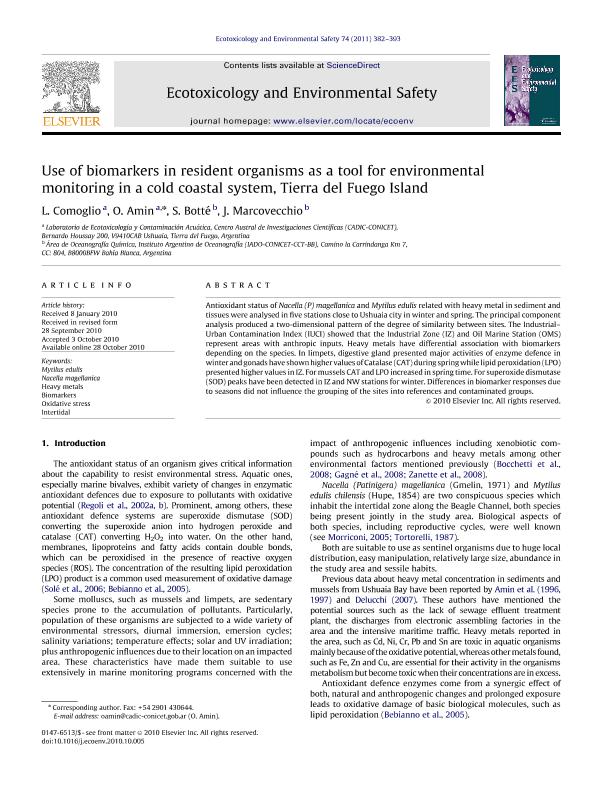Artículo
Use of biomarkers in resident organisms as a tool for environmental monitoring in a cold coastal system, Tierra del Fuego Island
Fecha de publicación:
02/2011
Editorial:
Elsevier
Revista:
Ecotoxicology and Environmental Safety
ISSN:
0147-6513
Idioma:
Inglés
Tipo de recurso:
Artículo publicado
Clasificación temática:
Resumen
Antioxidant status of Nacella (P) magellanica and Mytilus edulis related with heavy metal in sediment and tissues were analysed in five stations close to Ushuaia city in winter and spring. The principal component analysis produced a two-dimensional pattern of the degree of similarity between sites. The Industrial– Urban Contamination Index (IUCI) showed that the Industrial Zone (IZ) and Oil Marine Station (OMS) represent areas with anthropic inputs. Heavy metals have differential association with biomarkers depending on the species. In limpets, digestive gland presented major activities of enzyme defence in winter and gonads have shownhigher values of Catalase (CAT) during spring while lipid peroxidation (LPO) presented higher values in IZ. For mussels CAT and LPO increased in spring time. For superoxide dismutase (SOD) peaks have been detected in IZ andNWstations for winter. Differences in biomarker responses due to seasons did not influence the grouping of the sites into references and contaminated groups.
Palabras clave:
Marine Pollution
,
Biomarkers
,
Tierra del Fuego
,
Environmental Impact
Archivos asociados
Licencia
Identificadores
Colecciones
Articulos(IADO)
Articulos de INST.ARG.DE OCEANOGRAFIA (I)
Articulos de INST.ARG.DE OCEANOGRAFIA (I)
Citación
Comoglio, Laura Ines; Amin, Oscar Antonio; Botté, Sandra Elizabeth; Marcovecchio, Jorge Eduardo; Use of biomarkers in resident organisms as a tool for environmental monitoring in a cold coastal system, Tierra del Fuego Island; Elsevier; Ecotoxicology and Environmental Safety; 74; 3; 2-2011; 382-393
Compartir
Altmétricas




